PIC32MZ DA Microcontrollers with Integrated Graphics
Feature List
- Three-layer graphics controller capable of driving 24-bit color WVGA
- High-performance 2D Graphics Processing Unit (GPU)
- 32 MB integrated DDR2 DRAM or 128 MB externally addressable
- Up to 2 MB Flash and 640 KB RAM
- 12-bit Analog-to-Digital Converter (ADC) throughput at 18 Msps
- Full-featured hardware crypto engine with Random Number Generator (RNG) for data encryption/decryption and authentication
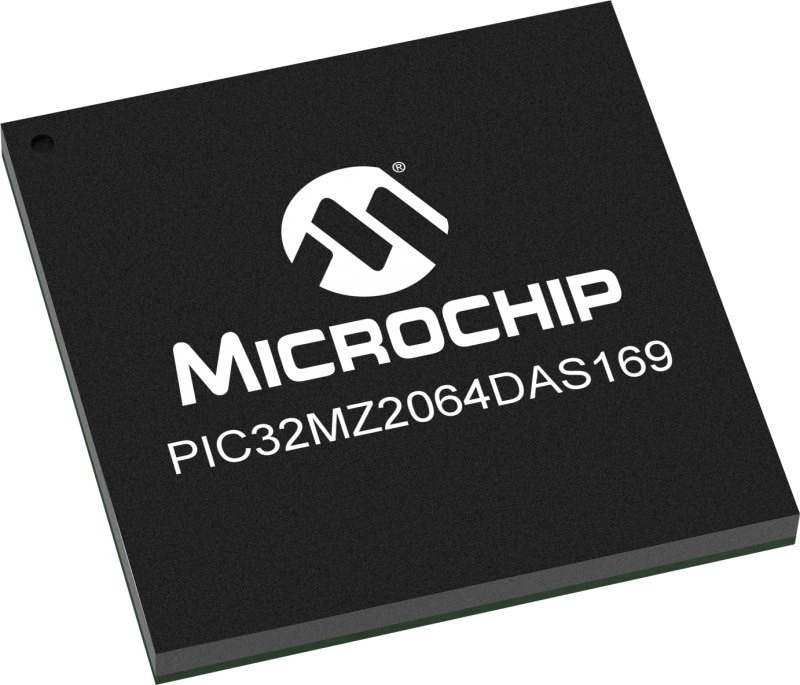
Graphics Controller
The graphics controller sub-system at the heart of the PIC32MZ DA is the most advanced of its kind in the industry.
- 24-bit parallel interface supports a wide range of displays up to WVGA (800 × 480)
- Multi-layers composition for simplified image rendering
- Supports multiple image and color space formats for maximum flexibility
- Flexible timing configuration to ease the implementation of custom displays
Graphics Processing Unit (GPU)
The Graphics Processing Unit (GPU) inside the PIC32MZ DA is loaded with features that will enable your GUI to create graphical actions that would be impractical for an MCU CPU alone.
- Accelerated 2-D graphics rendering
- Accelerated blit and raster operations
- Several alpha blending modes
- Transparency support
- 2D dithering
- Image scaling
- Programmable operations including ROP2, ROP3, ROP4, alpha blending and transparency
- Filtering
- Orientation
Integrated DRAM
The industry’s only integrated DRAM provides expansive storage for graphics, complex communications, and data logging applications.
- 32 MB capacity for rich, professional-looking graphics:
- 8-, 16-, or 24-bit color
- Multiple layers
- Multiple display buffers per layer
- Image and frame pre-load
- Fewer board layers lowers system cost
- Code and data transfer to and from DRAM do not leave the package, making the system more secure
- Greatly reduced system complexity eliminates traditional memory sub-system design challenges
- Integration leads to smaller designs that result in feature-rich, attractive end products
- Fewer components to stock and manage drives savings in logistics
- Integration reduces board EMI issues
The PIC32MZ DA gives you the ability to increase your application’s color resolution and display size with easy-to-use MCU-based resources and unique graphics design tools including the MPLAB® Integrated Development Environment (IDE) and MPLAB Harmony Integrated Software Framework.
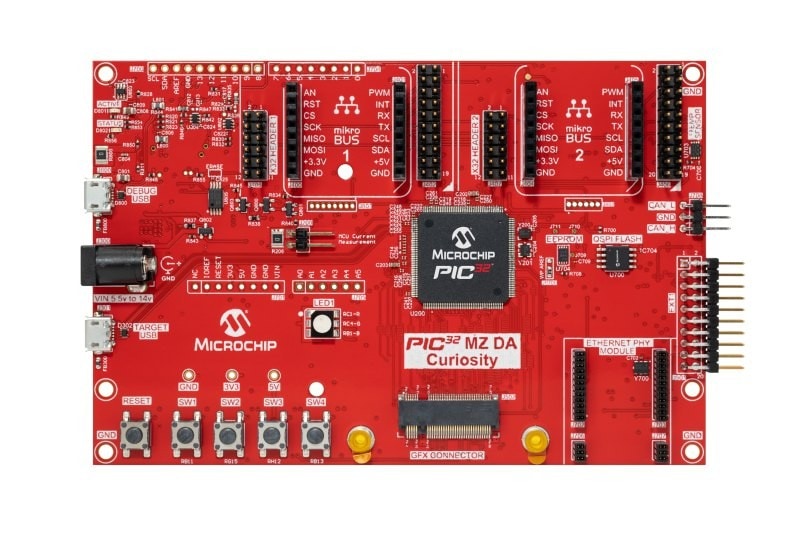
PIC32MZ DA Curiosity Development Board
Part Number: EV87D54A
Master the art of embedded Graphical User Interfaces (GUIs) with the PIC32MZ DA Curiosity Development Board. With this graphics-driven platform, you can explore and develop critical functions for a variety of applications, including Human Machine Interfaces (HMIs), Bluetooth® audio, CAN, Internet of Things (IoT) solutions and robotics. This board includes an integrated programmer and debugger and requires no additional hardware to get started creating prototypes and proofs of concept.
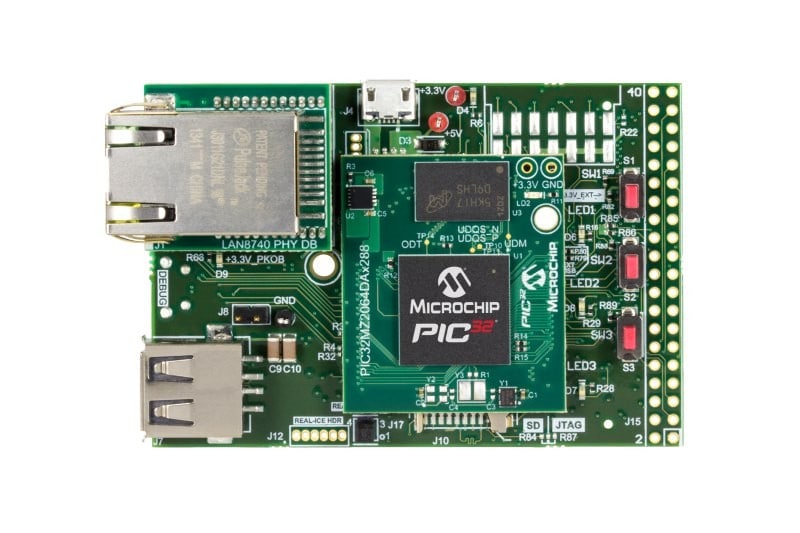
PIC32MZ Embedded Graphics with External DRAM (DA) Starter Kit
Part Number: DM320008
The PIC32MZ Embedded Graphics with External DRAM (DA) Starter Kit provides a low-cost method for the development and testing of graphics applications with PIC32MZ DA family devices.

PIC32MZ Embedded Graphics with External DRAM (DA) Starter Kit (Crypto)
Part Number: DM320008-C
The PIC32MZ Embedded Graphics with External DRAM (DA) Starter Kit for Crypto development provides a low-cost method for the development and testing of graphics applications with PIC32MZ DA family devices.
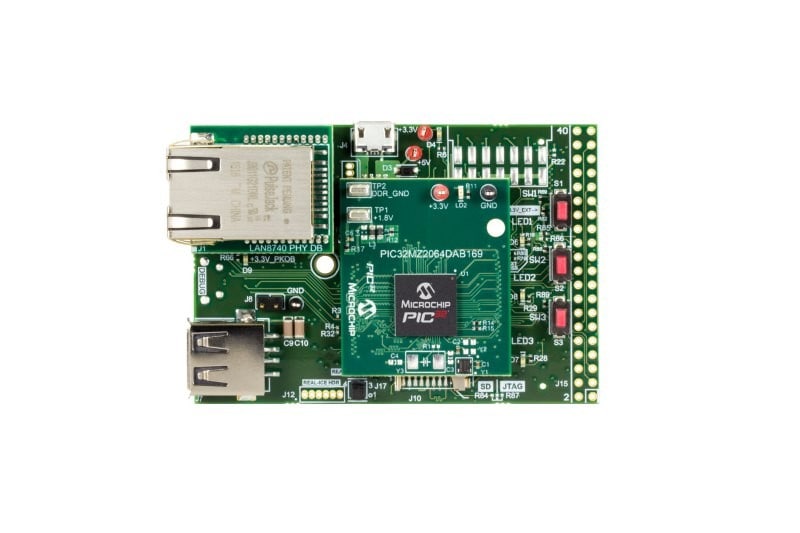
PIC32MZ Embedded Graphics with Stacked DRAM (DA) Starter Kit
Part Number: DM320010
The PIC32MZ Embedded Graphics with Stacked DRAM (DA) Starter Kit provides a low-cost method for the development and testing of graphics applications with PIC32MZ DA family devices.

PIC32MZ Embedded Graphics with Stacked DRAM (DA) Starter Kit (Crypto)
Part Number: DM320010-C
The PIC32MZ Embedded Graphics with Stacked DRAM (DA) Starter Kit for Crypto development provides a low-cost method for the development and testing of graphics applications with PIC32MZ DA family devices.
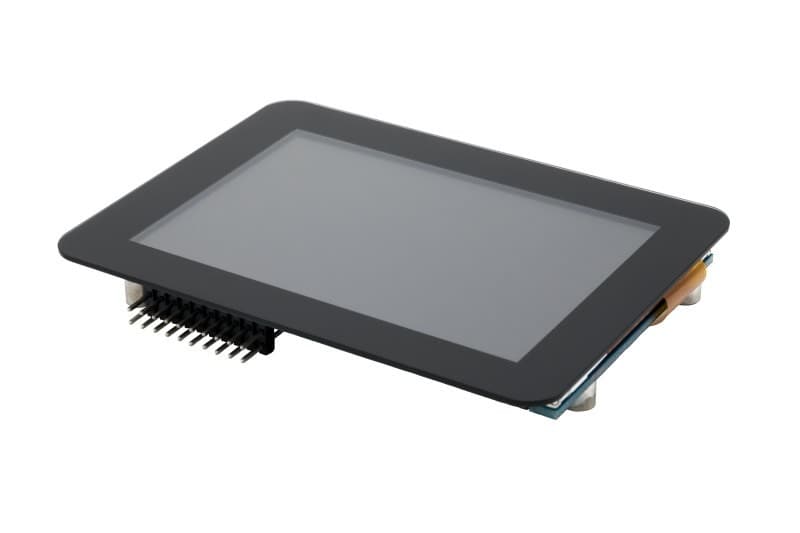
maXTouch® Technology Curiosity Pro Board
Part Number: AC320007
The maXTouch Technology Curiosity Pro is an extension board for the Xplained Pro evaluation platform and Curiosity family of development boards. It has a 320 × 480 RGB LCD and a capacitive touch sensor with a maXTouch touchscreen controller, which enable you to create Graphical User Interface (GUI) applications on an LCD. You can use the DIP switch to select different interfaces—such as 3-wire and 4-wire SPI, parallel and RGB parallel interface mode—to control the LCD.
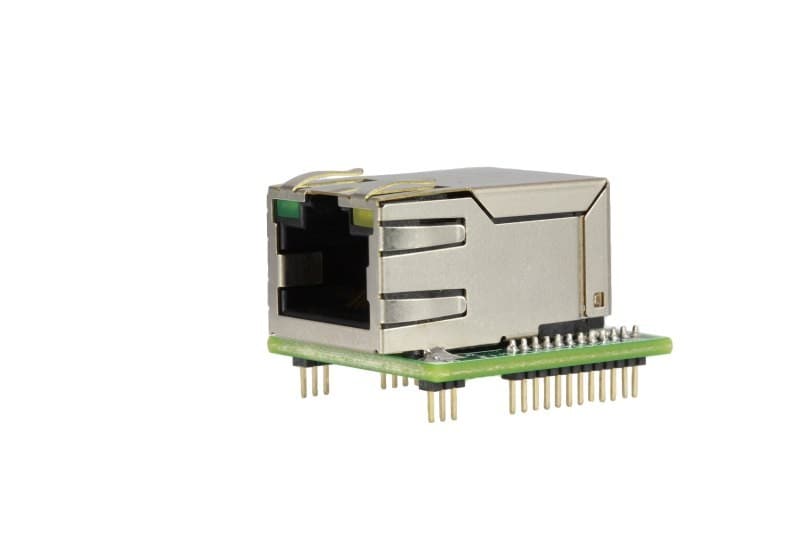
LAN8720A PHY Daughter Board
Part Number: AC320004-3
The LAN8720A PHY Daughter Board is populated with the high-performance, small-footprint, low-power LAN8720A 10BASE-T/100BASE-TX Ethernet PHY. It is designed for easy development of RMII Ethernet control applications when plugged into the PIC32 compatible starter kits.
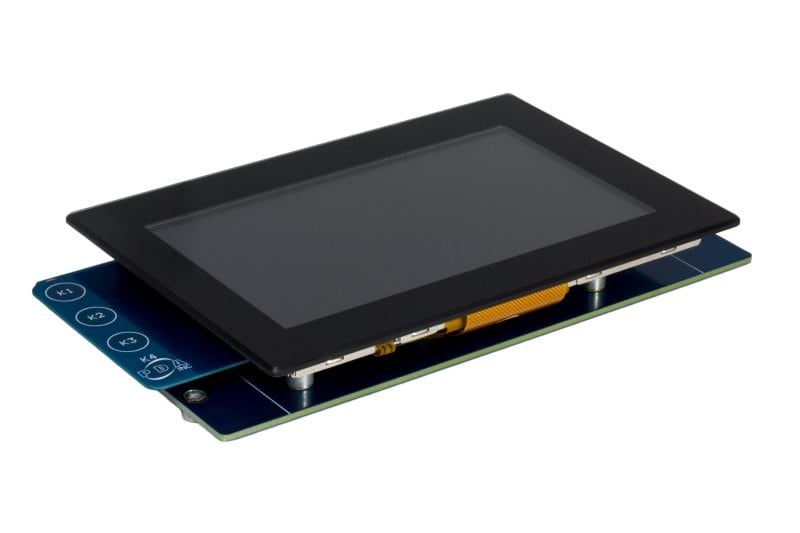
High-Performance 4.3" WQVGA Display Module with maXTouch® Technology
Part Number: AC320005-4
The High-Performance 4.3" WQVGA Display Module with maXTouch Technology is designed for evaluating our graphics display solution and graphics library for 32-bit MCUs. This board is compatible with the Multimedia Expansion Board II, as well as with Xplained Pro and Xplained Ultra evaluation kits. It has a 480 × 272 TFT display with a 24-bit parallel RGB interface and a maXTouch technology capacitive touch interface.
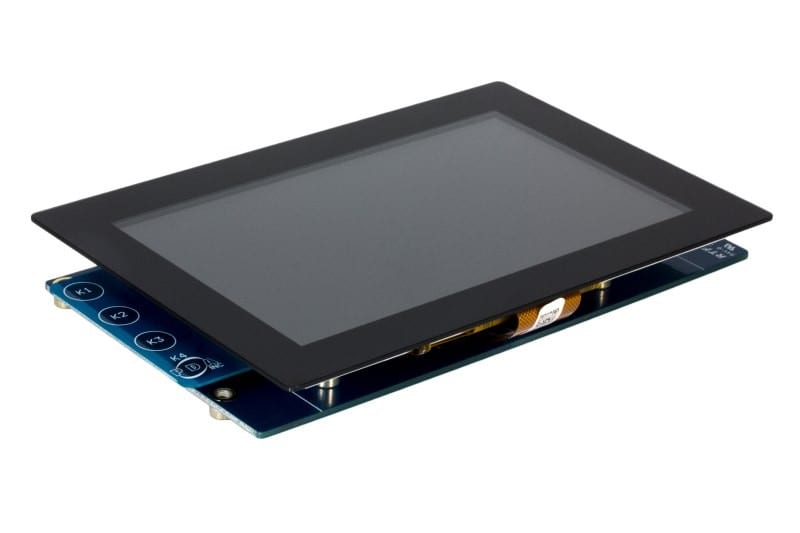
High-Performance WVGA Display Module with maXTouch® Technology
Part Number: AC320005-5
The High-Performance WVGA Display Module with maXTouch Technology is designed for evaluating our graphics display solution and graphics library for 32-bit MCUs. This board is compatible with both versions of the Multimedia Expansion Board II, as well as with Xplained Pro and Xplained Ultra evaluation kits. It has an 800 × 480 TFT display with a 24-bit parallel RGB interface and a maXTouch technology capacitive touch interface.
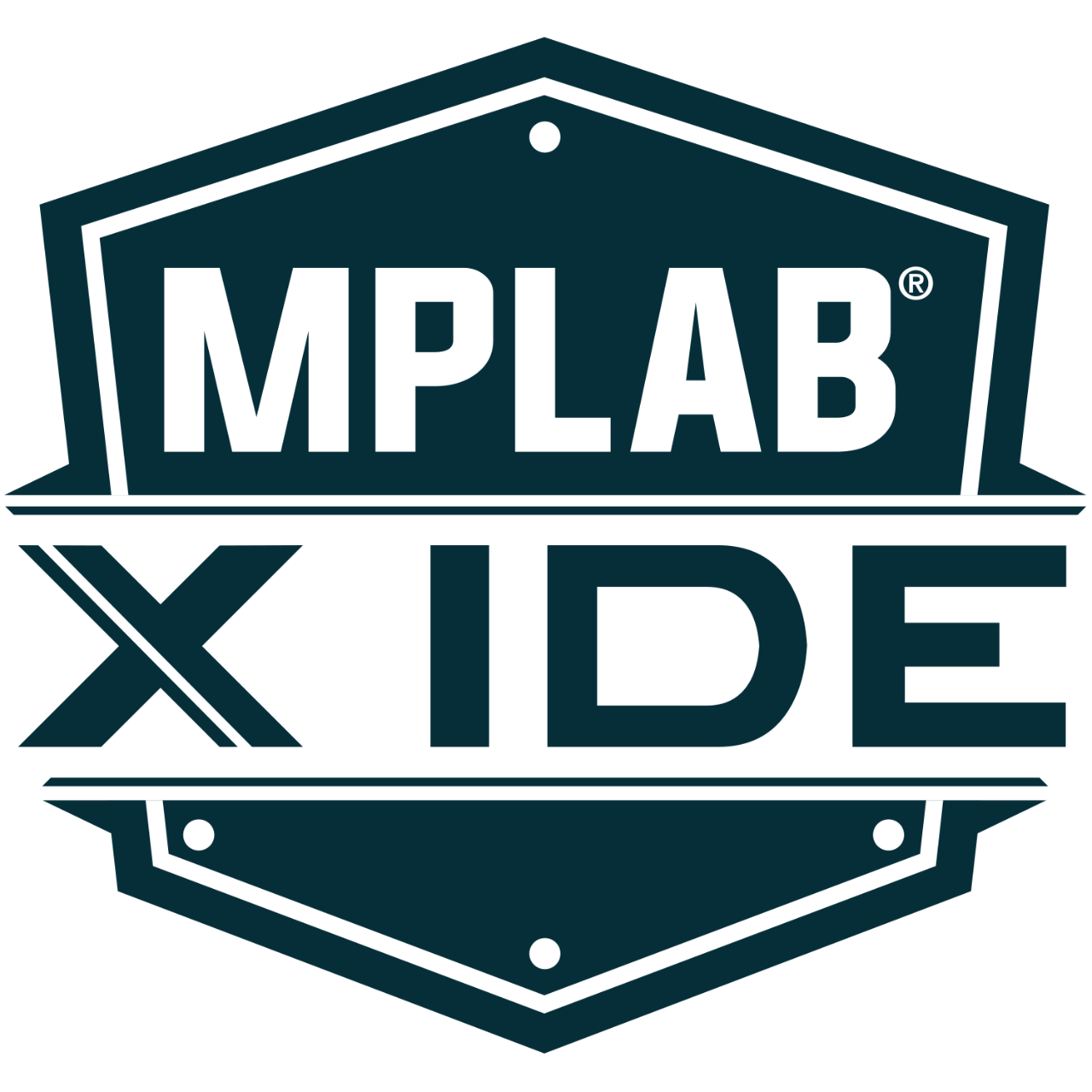
MPLAB® X Integrated Development Environment (IDE)
MPLAB X Integrated Development Environment (IDE) is an expandable, highly configurable software program that incorporates powerful tools to help you discover, configure, develop, debug and qualify embedded designs for most of Microchip’s microcontrollers and digital signal controllers. MPLAB X IDE works seamlessly with the MPLAB development ecosystem of software and tools, many of which are completely free.
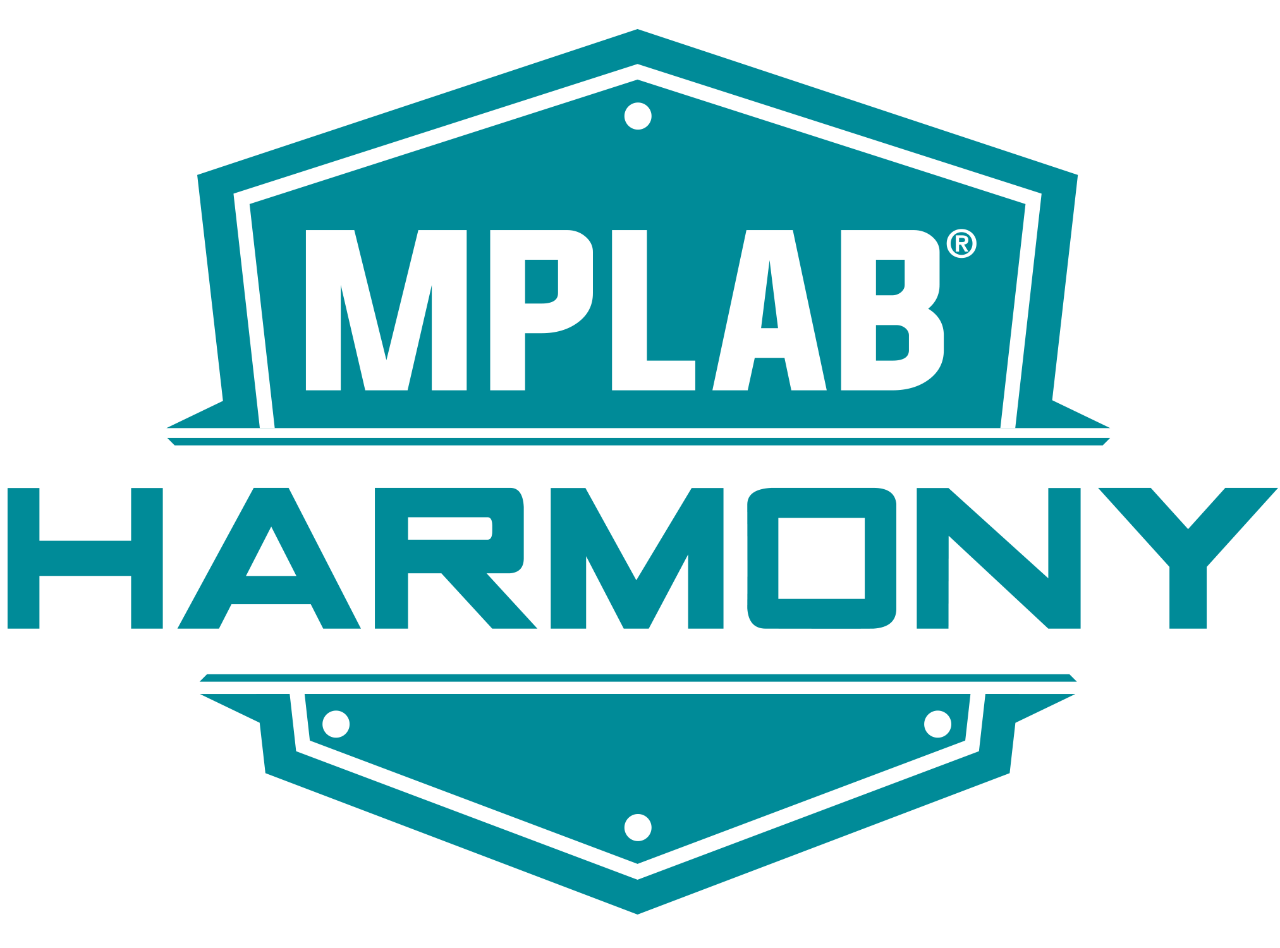
MPLAB® Harmony v3 Software Framework
MPLAB Harmony v3 is a flexible, fully integrated embedded software development framework for 32-bit microcontrollers (MCUs). It enables robust framework development of interoperable RTOS-friendly libraries with quick and extensive Microchip support for third-party software integration. MPLAB Harmony includes a set of peripheral libraries, drivers and system services that are readily accessible for application development. The code development format allows for maximum re-use and reduces time to market.
| Document Category | Title | Date | |||
|---|---|---|---|---|---|
| Errata | PIC32MZ Graphics (DA) Family Silicon Errata | 27 May 2021 |
|
||
| Brochures | Graphical and Segmented Display Solutions Brochure | 02 Aug 2018 |
|
||
| Data Sheets | PIC32MZ Graphics (DAK/DAL/DAR/DAS) Family Data Sheet | 30 Jun 2021 |
|
||
| Application Notes | Creating a USB Audio Device on a PIC32 MCU Using MPLAB Harmony Application Note | 28 Nov 2017 | Design Files |
|
|
| Application Notes | World's Fastest Embedded Interleaved 12-bit ADC Using PIC32MZ and PIC32MK Families | 28 Aug 2018 | Design Files |
|
|
| Application Notes | EMI, EMC, EFT, and ESD Circuit Design Consideration for 32-bit Microcontrollers Application Note | 28 Aug 2018 | Design Files |
|
|
| Application Notes | Creating a Multi-LUN USB Mass Storage Class Device Using the MPLAB® Harmony USB Device Stack Application Note | 08 Nov 2017 | Design Files |
|
|
| Tech Brief | The Difference Between MPLAB Harmony v3 PLIBs and Drivers, and When to Use Them | 28 Oct 2020 |
|
||
| Tech Brief | How to Setup MPLAB Harmony v3 Software Development Framework | 06 Jan 2023 |
|
|
Document Category
Title
Date
|
Errata
27 May 2021
|
|
Document Category
Title
Date
|
Brochures
02 Aug 2018
|
|
Document Category
Title
Date
|
Data Sheets
30 Jun 2021
|
|
Document Category
Title
Date
|
Application Notes
28 Nov 2017
|
|
Document Category
Title
Date
|
Application Notes
28 Aug 2018
|
|
Document Category
Title
Date
|
Application Notes
28 Aug 2018
|
|
Document Category
Title
Date
|
Application Notes
08 Nov 2017
|
|
Document Category
Title
Date
|
Tech Brief
28 Oct 2020
|
|
Document Category
Title
Date
|
Tech Brief
06 Jan 2023
|
- Application Notes
- Brochures
- Data Sheets
- Errata
- Product Documents
- Technical Briefs
|
Title
|
|
|---|---|
| Creating a USB Audio Device on a PIC32 MCU Using MPLAB Harmony Application Note | Download |
| World's Fastest Embedded Interleaved 12-bit ADC Using PIC32MZ and PIC32MK Families | Download |
| EMI, EMC, EFT, and ESD Circuit Design Consideration for 32-bit Microcontrollers Application Note | Download |
| Creating a Multi-LUN USB Mass Storage Class Device Using the MPLAB® Harmony USB Device Stack Application Note | Download |
|
Title
|
|
|---|---|
| PIC32MZ Graphics (DA) Family Silicon Errata | Download |
Microchip Bootloaders
Bootloaders are used to upgrade firmware on a target device without using an external programmer or debugger. Commonly used with microcontrollers (MCUs), a bootloader contains code that loads and executes an application program. Bootloaders can also perform additional tasks such as validating the code integrity and authenticity.

PIC32MZ Videos Playlist
Designed for complex applications, the PIC32MZ EF (MZEF) series offers high-performance microcontrollers (MCUs) with speeds up to 252 MHz and 415 DMIPS. Featuring up to 2 MB of dual-panel Flash memory and 512 KB of RAM, they provide excellent connectivity options such as Hi-Speed USB, CAN and 10/100 Ethernet. With an integrated double-precision FPU and an optional hardware crypto accelerator, the MZEF devices excel in process-intensive applications. Fully supported by the MPLAB® Harmony framework, these devices enable rapid development while meeting extended temperature and AECQ-100 Grade 1 qualification standards.